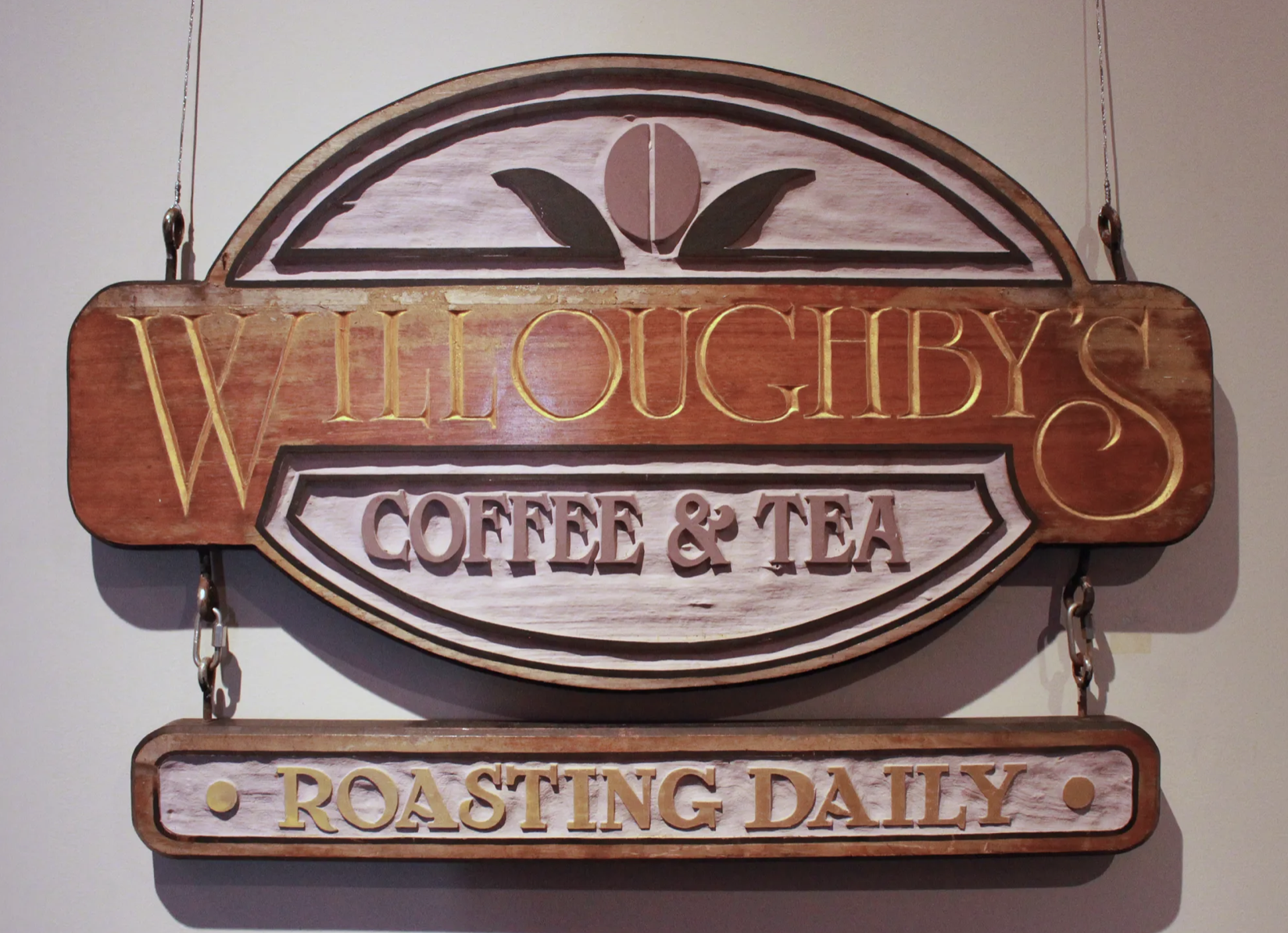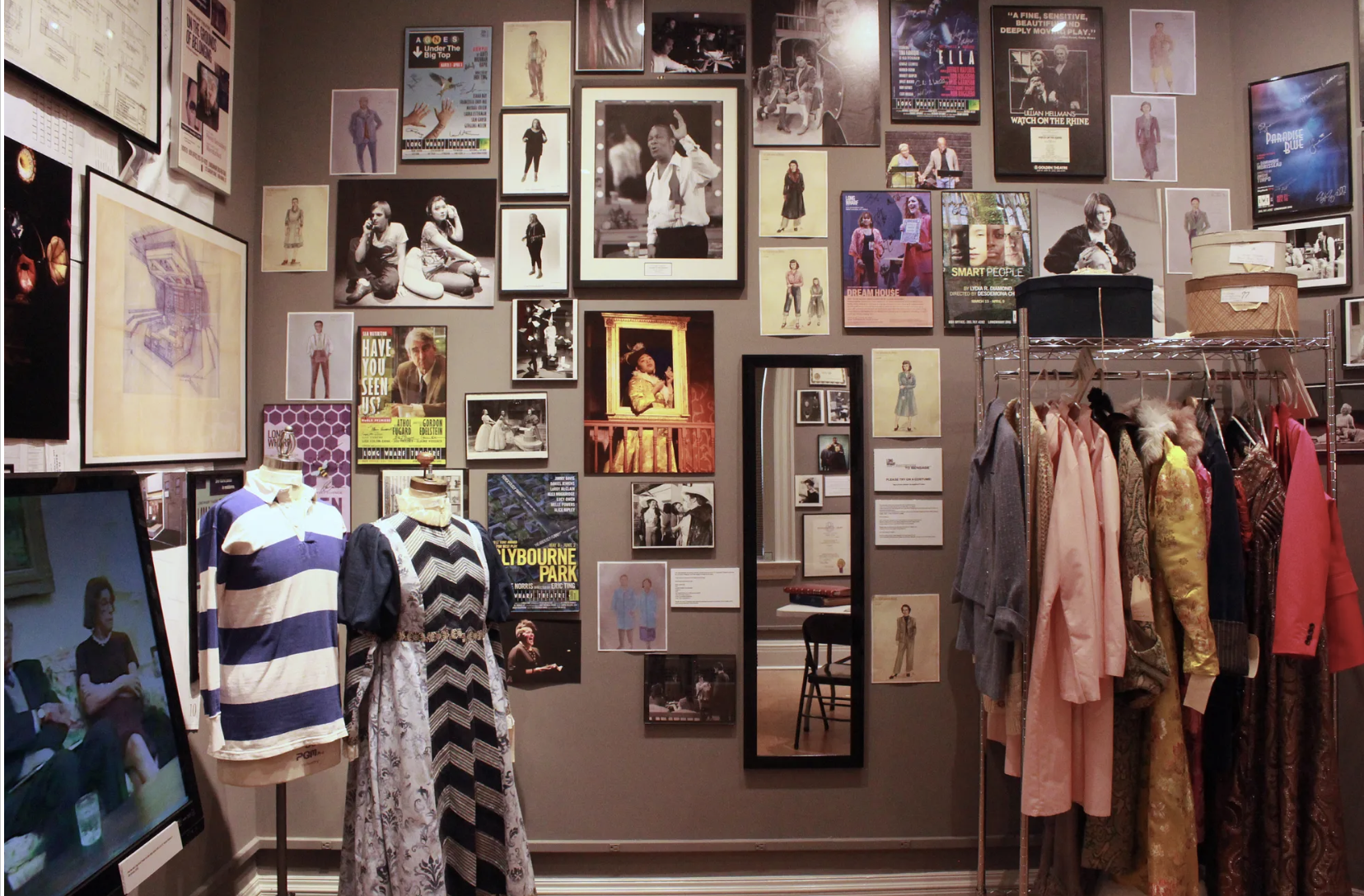
Two friends had a vision together, and got their ideas off the ground despite the naysayers. A decade later, what they created was a staple of the cultural scene.
In New Haven, this happened at least twice, albeit 20 years apart.
The first duo was Jon Jory and Harlan Kleiman, who started Long Wharf Theatre in 1965. The second was Barry Levine and Bob Wiliams, who started Willoughby’s Coffee and Tea in 1985.
The histories of the theater and the coffee shop are explored in two exhibitions — “Invitation to Engage: 60 Years of Long Wharf Theatre and Beyond” and “Willoughby’s Coffee and Tea: 40 Years” — running concurrently at the New Haven Museum through February. Put together, the exhibitions have something to say about the way the Elm City has changed since the theater and the coffee shop were founded, and what that might mean for the cultural entrepreneurs of today.
“Invitation to Engage” takes up all of the second floor of the New Haven Museum’s rotunda, plus an adjoining room, to give viewers a sense of the breadth of the theater’s productions over the decades and an appreciation for how they have been produced. The exhibition offers an overview of the theater’s history, with a keen sense of a long-running chapter having closed and a new one having begun with the theater moving out of its space on Sargent Drive in 2022 and moving to an itinerant model in 2023.
That first chapter starts with the theater’s founding in 1965 by Jory and Kleiman, pointing out that, at that time, regional theater wasn’t the constellation of institutions that it is now. “Before the 1960s, the professional American theater industry was centralized in New York City,” an accompanying note states. (Some might argue that it still is, but point taken.) “During the 1960s, regional (or ‘resident’) theatres began popping up in towns and cities across the nation, challenging the assumption that only Broadway could produce shows of the highest caliber. This moment in history is known as the American regional theatre movement (though its roots can be traced back to ancient Greece).”
New Haven already had a professional theater when Long Wharf opened: the Shubert, which had its first season in 1914. It developed a reputation for premiering shows that, if they did well, moved later to Broadway — as was the case for, say, Tennessee Williams’s A Streetcar Named Desire, which opened at the Shubert in 1947 and made Marlon Brando a star. But Long Wharf also proved something of a harbinger for the growth of New Haven’s theater scene; Yale Repertory Theatre had its first season in 1966. As Jory and Kleiman stated then, “the American theatre is right in the midst of an exciting resurgence. New Haven will join 26 other American cities with the opening of its own Long Wharf Theatre Company. The region will truly have its own professional theatre.”
Long Wharf’s first production was a run of Arthur Miller’s The Crucible, already regarded by then as a modern classic; it had won a Tony award for best new play in 1953. Miller, who lived much of his life in Connecticut, was an “unabashed fan of the company,” an accompanying note states. Miller called Long Wharf a “wonderful place to work with its staff of seasoned professionals,” adding that “if we can’t do it here, we can’t do it anywhere.”
For theatergoers who still mourn the loss of Long Wharf’s Sargent Drive space, the exhibition may feel like a kind of memorial. It is celebratory, but also possibly bittersweet, to see production photos from Long Wharf’s 1970s and 1980s seasons, studded with names like Joanne Woodward, Peter MacNichol, Brian Dennehy, Frances McDormand, Tom Hulce, and Mia Farrow. Just as important, however, it includes photos from the last couple seasons in its physical space, pointing out that the productions stayed — and, since the pandemic, have become again — as high-quality as ever.
The Long Wharf show makes for an interesting juxtaposition with the smaller show on the first floor about Willoughby’s, the New Haven-based coffee shop and roasters now celebrating 40 years of business.
Centered around one of the shop’s original espresso makers, a series of writeups, photographs, and other memorabilia tell the story of how the shop came to be. Founded by “friends Barry Levine and the late Bob Williams,” an accompanying note states, Willoughby’s opened its first location on Chapel Street in 1985. “With the novel idea of an in-store coffee roaster,” the store “quickly became a local favorite … recognized as Connecticut’s original specialty coffee roaster.”
A New Haven Register article reprinted in the show, celebrating the store’s 10th anniversary, gives a sense of the risk Levine and Wiliams took. “When we started this, we wanted to do it the best it can be done,” Williams is quoted as saying. The article notes that in 1985 a taste for fine coffee wasn’t part of broader U.S. culture. “We were met with a great deal of skepticism,” Levine is quoted as saying. “People in the investment community said, ‘You want to make a living off coffee?’ ”
But the duo’s emphasis on quality yielded success. Willoughby’s opened a second location on Church and Grove in 1991 and by 1994 had expanded to six stores, with a central roasting facility in Branford. As the show relates, the store chain was bought in 1996, then mismanaged, leading to a few locations closing. In 2004, the original crew bought the business back, and the coffee roaster survives today with a roaster, a few different store locations, and a robust e‑commerce business.
Today, Long Wharf Theatre and Willoughby’s are both vital components of two important aspects of New Haven’s culture: theatre and food. Both were pioneers in what became expansive fields. It’s hard to imagine the city without either of them, and that for that matter, without the panoply of theaters and coffee shops they ushered in, partly by creating the taste that made it all possible.
The shows’ historical perspective in both offers a glimpse of the fragility behind that. In the 1980s and 1990s, and even into the 2000s, it may have been difficult to imagine that Long Wharf Theatre would ever not have a permanent physical space. But years before artistic director Gordon Edelstein was fired after allegations of sexual misconduct in 2018, and before the pandemic that forced Long Wharf to close its doors, town talk had it that Long Wharf’s finances weren’t sustainable in the long term. And, it turns out, Willoughby’s might not have made it out of the 1990s either; it survived partially by contracting.
Hovering behind the difficulties in both institutions’ stories is a question for New Haven today. Both Long Wharf and Willoughby’s got their start in a New Haven that wasn’t as well-off as it is today. There were risks associated with that, but also opportunities: lower overhead, lower operating expenses. The culture they helped foster had a hand in creating New Haven’s current, relative prosperity. The city’s development strategy continues to rest partially on the fact of New Haven as a culturally vibrant place. But could an enterprising duo create a Long Wharf, or a Willoughby’s today? Or is the rent these days just a little too high?
“Invitation to Engage: 60 Years of Long Wharf Theatre and Beyond” and “Willoughby’s Coffee and Tea: 40 Years” are running now at the New Haven Museum, 114 Whitney Ave. Visit the museum’s website for hours and more information.






